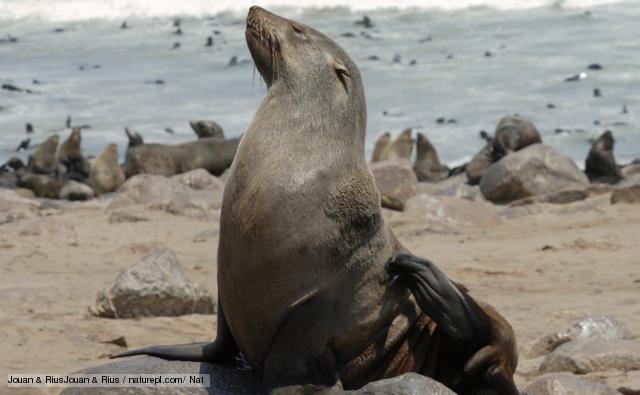Territorial Behavior in Pinnipeds
Biology 342 Fall 2015
Denis Ivanov, Stephanie Opiyo
Mechanism
Dominance Displays
In many pinnipeds displays of dominance are used to guard territories against other invasive males. Displays of dominance are focused on intimidating rivals rather than physically subduing them. These intimidation tactics are known as agonistic social signaling, and includes the use of vocalizations signaling aggression, as well as facial expressions and the performance of actions stereotypically understood as aggressive actions in order to discourage invasive males from engaging the owner of the territory, and to encourage them to leave to avoid a physical dispute. Physical aggression is sometimes used by males to defend territories as well, but typically it seems like more of a last resort action of defence (Renouf, 2012).

(Image courtesy of BBC Nature.)
Territorial Systems
Due to the tendency for female otariids to congregate in one area due to how resources are distributed throughout the environment, polygyny is highly frequent among otariid species. As a result, territorial behaviors such as lek systems are prevalent. In a lek system, males set up territories in within the larger groups of females, and display in hopes of attracting females to mate with them within their territories. Otariids and elephant seals make up the overwhelming majority of land-mating pinnipeds, and have very intense territorial behavior as a result of this terrestrial copulation. Most phocid species mate in the water, and this leads to a difference in territorial behavior and displays for rather obvious reasons.
Due to the tendency for female otariids to congregate in one area due to how resources are distributed throughout the environment, polygyny is highly frequent among otariid species. As a result, territorial behaviors such as lek systems are prevalent. In a lek system, males set up territories in within the larger groups of females, and display in hopes of attracting females to mate with them within their territories. Otariids and elephant seals make up the overwhelming majority of land-mating pinnipeds, and have very intense territorial behavior as a result of this terrestrial copulation. Most phocid species mate in the water, and this, rather obviously, leads to a difference in the performances territorial behavior due to the difference in environment.

Larger male Southern sea lion guarding the smaller female. Image Courtesy of Wikimedia Commons.
Aquatic Breeding
The two primary behavioral phenotypes for aquatically-breeding pinnipeds are 1) maritories and 2) mate-defense. Maritories are generally located near “haul-out” spots, foraging locations, or other high-access resources. Males will patrol these maritories actively, vocalizing and performing threat displays against intruding males, and waiting to mate with (likely) any and all receptive females that enter their maritory. Mate-defense is rather straight forwards. A male will patrol the vicinity around a lactating female and ensure that when she becomes receptive to mating, that he is the only one there to mate with. It could be said that this is another derivative form of maritory, except in this case, instead of a fixed point in an area of abundant resources, the center of the maritory is a dynamic point: the female herself. Frequently paired with these territorial displays are vocal and diving displays. These displays are “thought to be used predominantly for male-male competition and are also likely to play a role in attracting females”. These vocal signals are often complex and varied, and their variety depends on a number of factors including geography, mating system, gregariousness, and predation intensity (Miller, 2009).